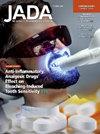创新的州口腔健康倡议:对医疗保险和医疗补助服务中心示范项目的定性分析。
IF 3.1
2区 医学
Q1 DENTISTRY, ORAL SURGERY & MEDICINE
引用次数: 0
摘要
背景:随着支付方和提供方寻求更高的效率、有效性和安全性,美国的医疗保健服务和融资安排正在迅速发生变化。医疗保险与医疗补助服务中心通过创新示范项目,包括口腔医疗项目,利用拨款和技术援助来推动这种发展。作者对这些牙科示范项目进行了审查,以确定共同的主题,并找出实施的障碍和促进因素:作者比较了 12 个已确定的示范项目,涉及 6 个领域:拨款和技术援助、利益相关者、内部医疗环境、外部环境、干预措施和结果。他们为每个示范项目编写了项目摘要,并使用半结构化指南对关键信息提供者进行了访谈,以审查、更正、澄清和扩充项目摘要:所有项目的共同点是:非传统医疗服务提供者的参与、非传统环境下的医疗服务、支付作为项目采用的关键外部因素、整合医疗和口腔保健的干预措施、使用替代支付模式以及跟踪过程措施。促进采用的因素包括口腔健康拥护者的参与以及获得任务支持和利益相关者之间的协调。常见的障碍包括意料之外的组织中断、信息技术基础设施薄弱、对非传统医疗模式的文化抵触以及高需求地区缺乏医疗服务提供者:描述性研究结果表明,口腔医疗保健可能会发展成为一种更负责任、更综合、更方便的医疗服务,同时劳动力队伍也会扩大;医疗服务提供者和支付者之间的合作仍将是创建创新的、可持续的口腔医疗保健模式的关键:实际意义:医疗保险和医疗补助服务中心为促进健康公平、扩大覆盖范围和改善健康结果所做的努力将继续推动口腔医疗保健领域的类似举措。本文章由计算机程序翻译,如有差异,请以英文原文为准。
Innovative state oral health initiatives
Background
US health care delivery and financing arrangements are changing rapidly as payers and providers seek greater efficiency, effectiveness, and safety. The Centers for Medicare & Medicaid Services uses grants and technical assistance to drive such development through innovative demonstration programs, including for oral health care. The authors reviewed these dental demonstrations to identify common themes and identify barriers to and facilitators of implementation.
Methods
The authors compared 12 identified demonstrations across 6 domains: grant and technical assistance, stakeholders, inner care settings, outer contextual settings, interventions, and outcomes. They developed program summaries for each demonstration and interviewed key informants using a semistructured guide to review, correct, clarify, and expand on program summaries.
Results
Common across all programs were engagement of nontraditional providers, care in nontraditional settings, payment as a critical externality for program adoption, interventions that integrate medical and oral health care, use of alternative payment models, and tracking process measures. Adoption facilitators included an engaged oral health champion and obtaining mission support and alignment among stakeholders. Common barriers included unanticipated organizational disruptions, poor information technology infrastructure, cultural resistance to nontraditional care models, and lack of providers in high-need areas.
Conclusions
Descriptive findings suggest that oral health care may evolve as a more accountable, integrated, and accessible health service with an expanded workforce; collaboration between providers and payers will remain key to creating innovative, sustainable models of oral health care.
Practical Implications
The Centers for Medicare & Medicaid Services’ efforts to advance health equity, expand coverage, and improve health outcomes will continue to drive similar initiatives in oral health care
求助全文
通过发布文献求助,成功后即可免费获取论文全文。
去求助
来源期刊

Journal of the American Dental Association
医学-牙科与口腔外科
CiteScore
5.30
自引率
10.30%
发文量
221
审稿时长
34 days
期刊介绍:
There is not a single source or solution to help dentists in their quest for lifelong learning, improving dental practice, and dental well-being. JADA+, along with The Journal of the American Dental Association, is striving to do just that, bringing together practical content covering dentistry topics and procedures to help dentists—both general dentists and specialists—provide better patient care and improve oral health and well-being. This is a work in progress; as we add more content, covering more topics of interest, it will continue to expand, becoming an ever-more essential source of oral health knowledge.
 求助内容:
求助内容: 应助结果提醒方式:
应助结果提醒方式:


